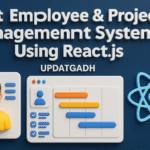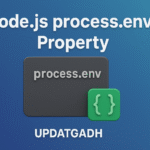
Graph Convolutional Networks: Introduction to GNNs
Graph Convolutional Networks: Introduction to GNNs
In the world of artificial intelligence (AI) and machine learning (ML), understanding complex relationships among data points is essential. While traditional neural networks excel at processing structured data like images or text, they struggle with data represented in irregular, interconnected formats. Many real-world problems—from social network analysis to molecular modeling—naturally form networks or graphs. Graph Convolutional Networks (GCNs) are useful in this situation.
Neural networks of the GCN class are made to function with graph-structured data.Their ability to model relationships between entities has made them an increasingly popular tool across domains such as recommendation systems, fraud detection, and drug discovery.
Machine Learning Tutorial:-Click Here
Data Science Tutorial:-Click Here
Complete Advance AI topics:- CLICK HERE
DBMS Tutorial:-CLICK HERE
Foundations: Neural Networks at a Glance
The human brain serves as the inspiration for neural networks, which are computer models. They are made up of layers of interconnected nodes, or neurones. After processing inputs and applying a mathematical function, each neurone sends the output to the layer below. Neural networks can extract intricate patterns from data thanks to this structure.
Key Components:
- Neurons: Core units that compute weighted sums of inputs, pass them through activation functions, and generate outputs.
- Layers: Include input, hidden, and output layers. Hidden layers perform most of the computations.
- Weights and Biases: Parameters adjusted during training to reduce error.
- Activation Functions: Introduce non-linearity; popular examples include ReLU, sigmoid, and tanh.
- Feedforward and Backpropagation: Mechanisms for data flow and parameter optimization using gradients.
Neural networks are widely used in applications such as image recognition, speech processing, and natural language understanding.
What Are Convolutional Neural Networks (CNNs)?
CNNs are specialized neural networks primarily used for visual data. They analyze spatial hierarchies in images and videos using three main types of layers:
- Convolutional Layers: Apply filters (kernels) to extract features like edges, textures, and shapes.
- Pooling Layers: Downsample feature maps to reduce dimensionality and computation, commonly through max or average pooling.
- Fully Connected Layers: Perform final classification or regression tasks based on extracted features.
Why CNNs Excel in Visual Tasks:
- Feature Hierarchies: Learn complex patterns from raw pixel data.
- Parameter Sharing: Efficiently reuses filters across different image regions.
- Translation Invariance: Recognizes patterns regardless of position.
CNNs have revolutionized areas like autonomous driving, facial recognition, and medical imaging.
Diving into Graph Convolutional Networks
Unlike traditional neural networks or CNNs, GCNs are crafted for graph data—where nodes represent entities and edges define relationships. These networks can handle variable-size input and arbitrary connections, making them ideal for analyzing non-Euclidean structures.
How GCNs Work
A message-passing mechanism lies at the core of GCNs. To update its representation, every node compiles data from its neighbours. Over multiple layers, a node captures increasingly broader context within the graph.
The typical GCN layer performs these steps:
- Aggregation: Collect features from neighboring nodes.
- Combination: Merge aggregated information with the node’s existing features using a learnable function.
- Transformation: Apply linear transformation followed by a non-linear activation (e.g., ReLU).
This process mimics how influence or information spreads in a network—like social behavior spreading in a community.
Convolution on Graphs: The Core Operation
Convolution in GCNs differs from traditional convolution, as it operates over irregular structures. Instead of sliding filters over grid-like data (like images), GCNs perform operations based on node connectivity.
Mathematical Insight:
Graph convolution leverages the graph Laplacian, a matrix capturing the structure and relationships within a graph. Using this matrix, GCNs can define operations analogous to signal processing on graphs.
Steps in Graph Convolution:
- Filter Definition: Establish learnable filters applicable across the graph.
- Neighborhood Aggregation: Each node gathers and averages the features of its immediate neighbors.
- Non-Linear Transformation: Transformed features are passed through activation functions.
- Stacking Layers: Repeated applications allow capturing global graph patterns from local interactions.
Through these operations, GCNs build deep node representations that consider both individual features and network topology.
Applications of GCNs
Graph Convolutional Networks are powerful tools in areas where data naturally forms a graph:
- Social Networks: Identifying communities or detecting fake accounts.
- Recommendation Systems: Predicting user preferences based on interaction graphs.
- Drug Discovery: Modeling molecules where atoms are nodes and bonds are edges.
- Traffic Prediction: Forecasting congestion using road network graphs.
- Knowledge Graphs: Enhancing semantic understanding in AI systems.
Complete Python Course with Advance topics:-Click Here
SQL Tutorial :-Click Here
Download New Real Time Projects :-Click here
Conclusion
Graph Convolutional Networks are a significant evolution in deep learning, enabling models to learn from structured, interconnected data. By generalizing convolution to graphs, GCNs bridge the gap between traditional ML methods and the complex nature of real-world data.
As the field of AI continues to evolve, GCNs will play a critical role in solving problems that extend beyond pixels and sequences—helping us understand and model the intricate web of relationships that shape our world.
graph convolutional networks paper
semi-supervised classification with graph convolutional networks
graph convolutional networks for image classification
graph convolutional networks tutorial
graph convolutional networks architecture
graph convolutional networks pytorch
graph convolutional networks kipf
graph convolutional networks vs graph neural networks
graph neural network
graph convolutional networks python
graph convolutional network geeksforgeeks
graph convolutional network example









Post Comment